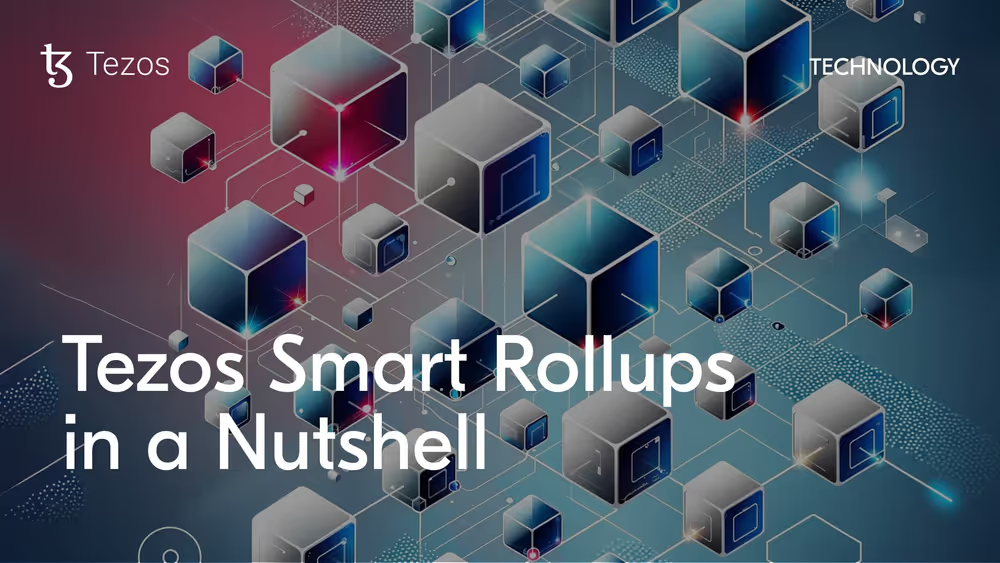Tezos Smart Rollups in a Nutshell
In this video, you’ll learn what Smart Rollups are, what makes them special, and the key benefits they bring.
3 minute read

What are Tezos Smart Rollups? #
Smart Rollups are a Layer 2 scaling solution on Tezos. They greatly increase transaction capacity by moving computation from Layer 1 to a dedicated infrastructure.
Tezos Smart Rollups are optimistic, and they are enshrined in the protocol. They can also be either public or private.
Smart Rollups can be written in any language that compiles to WASM.
What are rollups? #
Rollups are a Layer 2 solution to scale computation that inherit the security guarantees of the main blockchain.
Computations are executed off-chain, and a summary of the results is committed periodically to the layer 1 blockchain.
Rollups enable a massive increase in transaction throughput. For example, teams working on Tezos achieved one million transactions per second using rollup technology.
What makes a rollup “optimistic”? #
Tezos Smart Rollups are optimistic.
In optimistic rollups, anyone can post a commitment to the results of a computation to the Layer 1 blockchain. These commitments are considered valid if they’re not refuted within a set period - around two weeks on Tezos.
It’s up to users to verify if commitments are valid and to challenge them if they’re not by providing fraud proofs.
If fraud is confirmed, the challenger receives a reward and the fraudulent party loses their staked tokens.
In a nutshell, all transactions are valid unless proven otherwise. Only one honest node is needed to ensure the validity of the state of an optimistic rollup.
What does “enshrined” mean for a rollup? #
Smart Rollups are “enshrined” on Tezos. That means that they’re first class citizens, and that the rollup validation logic is built into the protocol.
That also means that the L1 protocol can provide common, open infrastructure to all rollups, like the message inbox and the logic for refutation games.
This allows developers to deploy and run Smart Rollups right out of the box. It’s much easier and more secure than recreating the entire infrastructure every time with smart contracts.
Anybody can check the logic behind rollup management, because the Tezos protocol itself is open source.
Any changes to the rollup management logic also need to go through the Tezos governance process and be voted on by the community.
Public vs private rollups #
Tezos supports both public and private Smart Rollups.
Public rollups are permissionless, meaning anyone can be an operator and help verify the security of the rollup’s state.
Private rollups, on the other hand, are permissioned. This means that the rollup originator can limit the set of operators who can verify the state and contribute to the rollup’s security.
This feature is useful in cases where the state of the rollup needs to be protected. When you originate a Smart Rollup on Tezos, you can specify if it will be public or private.
It’s possible to later make a private rollup public, but not the other way around.
For a deep dive on Smart Rollups and how to deploy one, check out the Tezos docs.